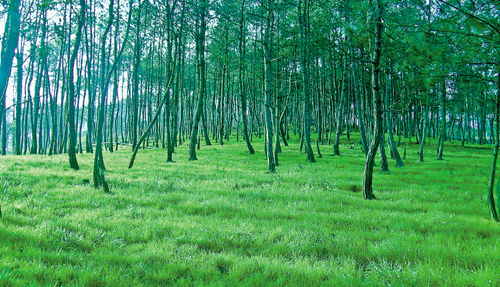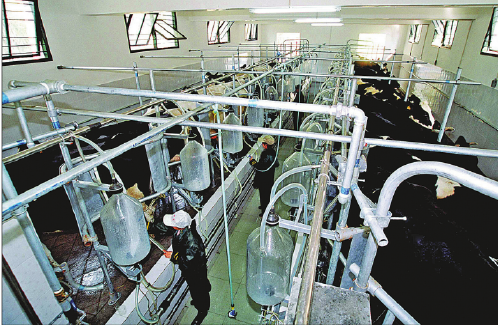
CHINA DAILY
The Dushan farm proves that a barren wasteland can be transformed into forests and pasture.

CHINA DAILY
The farm also boasts fresh milk by free-range cows.

CHINA DAILY
The grass varieties imported from New Zealand and Australia have brought the farm a revitalized landscape.
Thirty years ago, this was a barren wasteland. Now, Dushan county is a provincial promoter of pasture technologies. Sun Yuanqing reports.
The slopes are boundless and the grass is flourishing. With the mooing and bleating, one could easily mistake this grazing pasture in Dushan county, Guizhou province in Southwest China for a farm in New Zealand.
The milk tastes the part too. This is actually one of the few places in China where you can taste fresh milk produced by cows that run free 24 hours a day.
A barren wasteland 30 years ago, Dushan demonstrates how New Zealand experience can be applied in Southwest China, which has one of the most typical karst landscapes in the world.
"People thought it impossible to develop pasture and husbandry here, but we have proven them wrong," says Zhang Buyun, chairman of the labor union of the Dushan Pastoral and Seed Demonstration Farm. He has witnessed and taken part in the endeavor to change Dushan from a rocky deserted land to one of China's best grazing pastures.
It is estimated that more than 40 percent of the land, or 320,000 square kilometers, in Guizhou and Yunnan provinces and the Guangxi Zhuang autonomous region, suffers from stony desertification. Forests and grassland in the fragile karst area were set on fire and transformed into farmland to feed more people, causing natural hazards, low fertility and eventually poverty.
We recommend:
